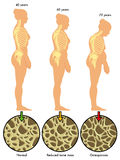Kyphosis exercise
Kyphosis exercise If you are considering doing exercises for you back hump, there are some important things you should know about the effects of exercises.
1. As early as 2005 there was a study published by Researchers at Department of Geriatric Medicine in Utrecht, The Netherlands showing the exercises emphasizing functional tasks (tasks related to daily activities) proved more effective than traditional resistance training (weight lifting by hand or machine or by bands) even though many of the participants preferred the resistance training.
2. Another study published February 2009, the Archives Physical Med Rehabilitation journal published a study by Researchers at the Department of Physical Therapy and Rehabilitation Science at UCLA.
Researchers worked with a group of 21 women ages 65 - 80 who had thoracic kyphosis (dowagers humps) of 50 degrees or greater. Many of us would call this severe back hump since the women would be almost bent in half. The women performed groups exercises twice a week for 12 weeks. The exercises included those that made for spinal extensor strengthening, flexibility exercises, and integrated spinal proprioception training. After this period of group exercise, the women continued to exercise on their own for the next year.
After 1 year the researchers re-examined the women and found that even those who were most bent (hyperkyphotic) maintained their gains in the year after the group exercises. The researchers believed that having the class experience in which there were several forms of exercise really helped.
Significant reduction in risk of falls and back pain

A study at the Mayo clinic found that after only 4 weeks on a special exercise program, participants with kyphosis showed a significant change in balance, gait and back strength. What is even more significant, participants showed a significant decrease in back pain.
This study used the "spinal proprioceptive extension exercise dynamic (SPEED) program"
How to get started on an appropriate kyphosis exercise program
If you already have Osteoporosis of the spine, you do not want to do any form of exercise that could put undue strain on weakened vertebrae. You do not want to start just any exercise program. Please, do not walk into a gym and let just any exercise coach tell you what to do. You want someone who has studied your condition and who knows what sort of kyphosis exercise is both safe and effective.
So talk with your licensed health care provider. Ask for a prescription for physical therapy. Ask for a recommendation to a physical therapist who understands your condition and what should or should not be done.
You could also use a Physical Therapy Association web site to the find a Physical Therapist in your area. Here is a site for Licensed PT for Kyphosis exercise in the USA
NOTE: If you live outside the USA, try a web search to find the professional physical therapy association in your country.) Be sure to ask any therapist how much experience they have had working with people who have Kyphosis. There is a time and place to be 'choosy' and this is one of them.
See: Exercise warning for those with spinal Osteoporosis

